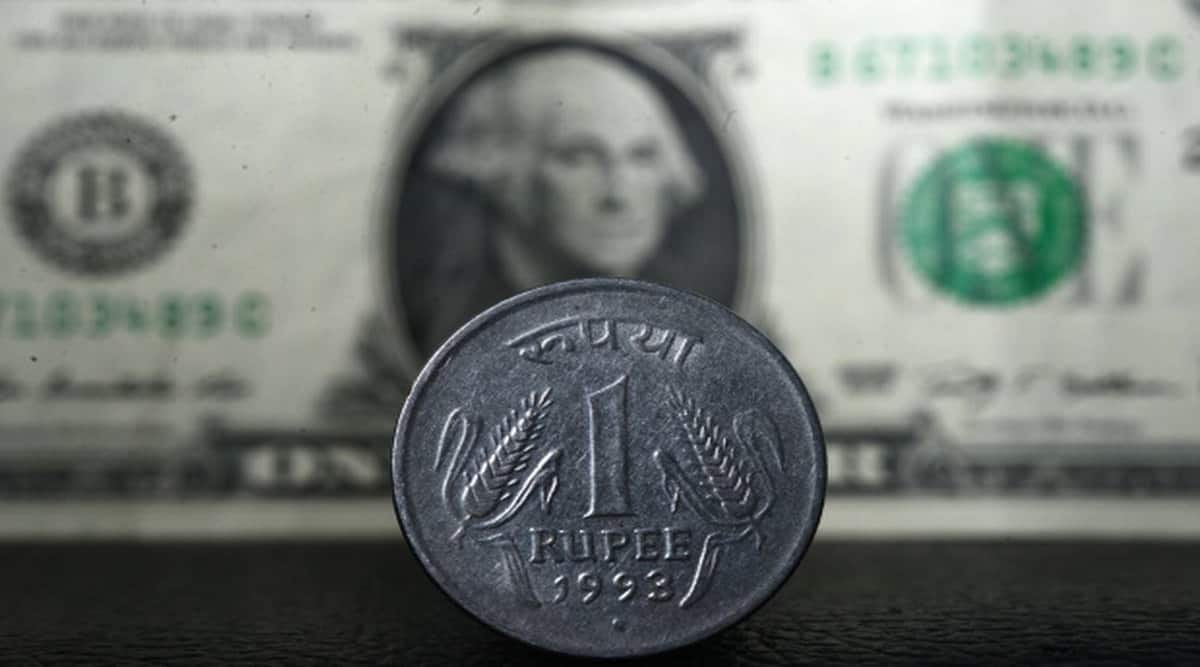By Amit Pabari
After consolidating for almost 2 years in the range of 72.30 to 77.00 zone, the Indian Rupee approached to test fresh all-time low against USD. The factors which took it from 74.50 to 77.00 mark were obviously higher crude oil prices led by the Russia-Ukraine crisis, risk-off led stronger US dollar and mayhem in the other commodity prices. However, it took a breather and jumped up to the 76.07 mark last week. Probably, RBI rescued the local currency from sliding beyond 77. But how aggressive they would go in the upcoming time will be the biggest question. Currently, Rupee is the fourth-worst currency (as per Year to Date performance) amongst the peer emerging markets currency pack.
Factors against Rupee are as below.
Higher oil prices could lead to widening trade deficit: The biggest component of the trade deficit has been the crude and thus it has remained the number one risk. India imports roughly 85% of its oil requirement and higher oil prices make payable costlier. It is said that the sensitivity of the Rupee to brent oil turns multifold beyond $100 mark and with the dollar too strengthens. On average, every $10 change in crude oil leads to a 30 bps jump in Inflation and slashes 20 bps in growth rate. The ongoing havoc in oil is likely to push up India’s current account deficit to near 3% of the GDP in FY23.
FIIs’ relentless selling: From Mar-2020 to Sep-2021, FIIs invested almost $40 in Indian markets. However, Fed’s hawkish turn from October made a ‘U’-turn in the flows. The withdrawal was further supported in 2022 by the soaring US inflation, and finally by the Russia-Ukraine war. Since October, they have encashed almost $18 billion and the same story could further go on. Moving ahead, hawkish Fed, weakening domestic economic sentiment, higher oil prices, widening trade deficit and RBI’s reluctance to turn hawkish could make the flow story worst. And this could go against Rupee.
Both risk-on and risk-off sentiment support stronger USD: The USD is the only currency that gets supported by both type of fundamental sentiment- Risk on and Risk-off. Till mid-Feb, USD was supported due to Fed’s tightening tone and multiple hike stories. But post that, the Russia-Ukraine war supported the demand for USD as the US will be the least one to default. Overall, the stronger USD would be non-supportive for the EM currencies.
RBI’s dovish stance on policy: The RBI’s dovish February policy led to a sharp depreciation in the Rupee as the risk of higher inflation due to excess liquidity heightened. The central bank is expected to remain dovish for another quarter to sow the seeds of the durable economic recovery and support the government’s heavy borrowings for the next financial year. Meantime, the accommodative stance could be lead to a depreciation in the Rupee.
The only point in favor of the rupee is mentioned as below.
RBI’s aggressive intervention: The RBI holds the 4th highest FX reserves in the world, with a kitty of approx. USD 630 billion. Naturally, this was piled up as a hedge against a sudden outflow of foreign investment. As outflows are dominating and that is weighing on the Rupee, RBI could try to absorb that hit on a regular basis and calm down the sliding nerves. Hence, a regular intervention by the RBI could be a position point for the Rupee.
Technically speaking, the given USDINR pair suggests that the pair is making higher tops and bottoms, but resisted strongly under previous top near 76.95 levels. In the near future, if it crosses the 76.95 to 77.10 zone convincingly, then we could see a bigger leg unfolding towards 78. If that is also taken out then probability will increase for a move towards 79.15 levels. On the contrary side, 75.80 to 75.40 will act as a strong support zone.
Outlook on Rupee
The vulnerability of the Rupee will lie in the fundamentals. If things don’t improve globally and crude oil remains elevated above the $100 mark, then surely basic fundamentals- widening trade deficit, higher inflation, and sluggish growth will take place. And foreign investors will remain away from the Indian market. And this all suggests a weakening bias for the Rupee over the short and medium term. With no option left, RBI could tame down a sudden fall in Rupee but had to allow it to remain in sync with fundamentals. Overall, the USDINR pair is expected to cross the double top of the 77 mark in the near term and move quickly towards 78 and then towards 79.15 over the next 3 months. The probability of testing 78 is 95% and 79.15 is 75%.
(Amit Pabari, managing director, CR Forex Advisors. Views expressed are the author’s own.)
Tags: 上海北蔡干磨会所TO, 上海花千坊UEN, 模特经纪LV, 重庆保健按摩私人会所XJ